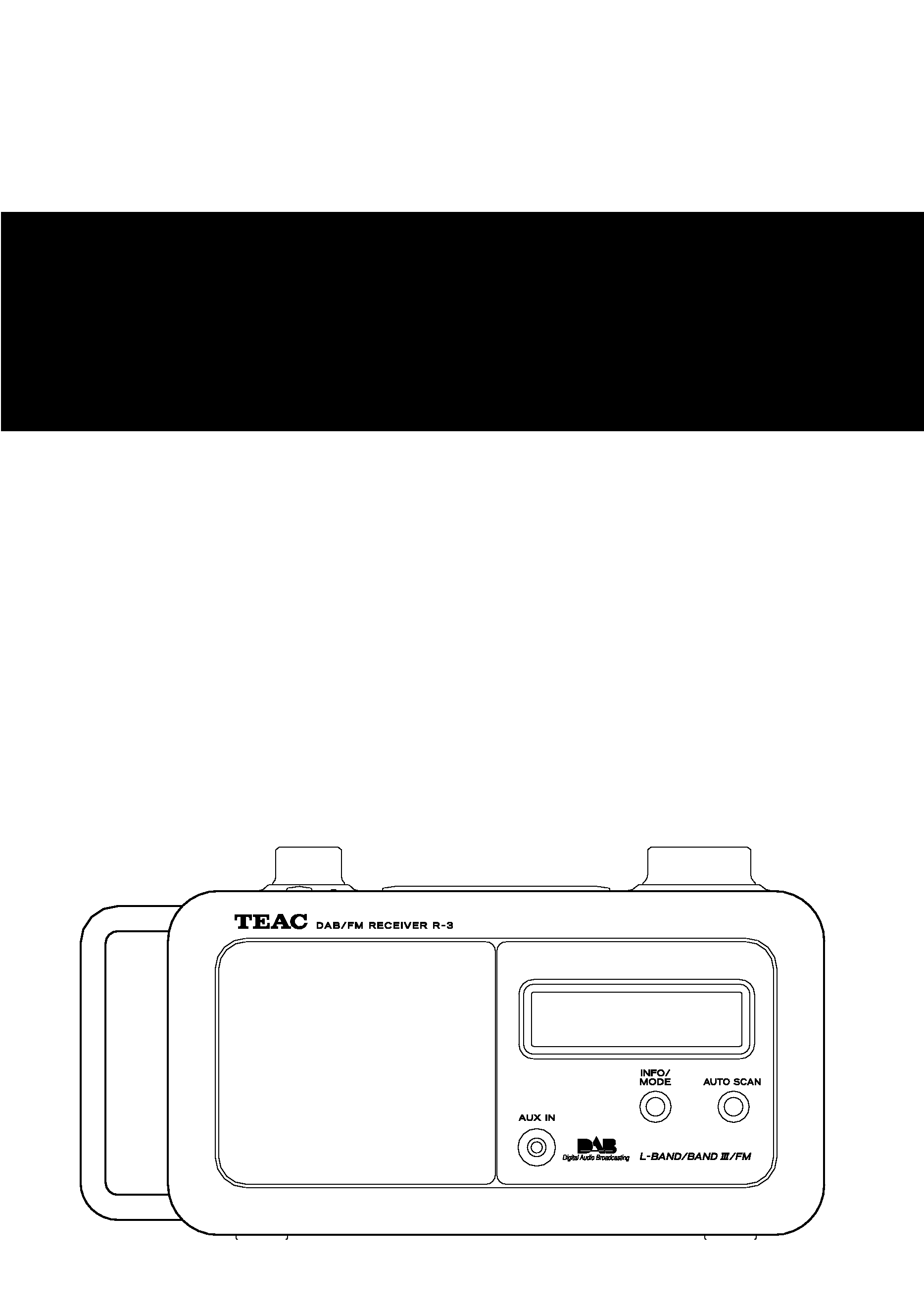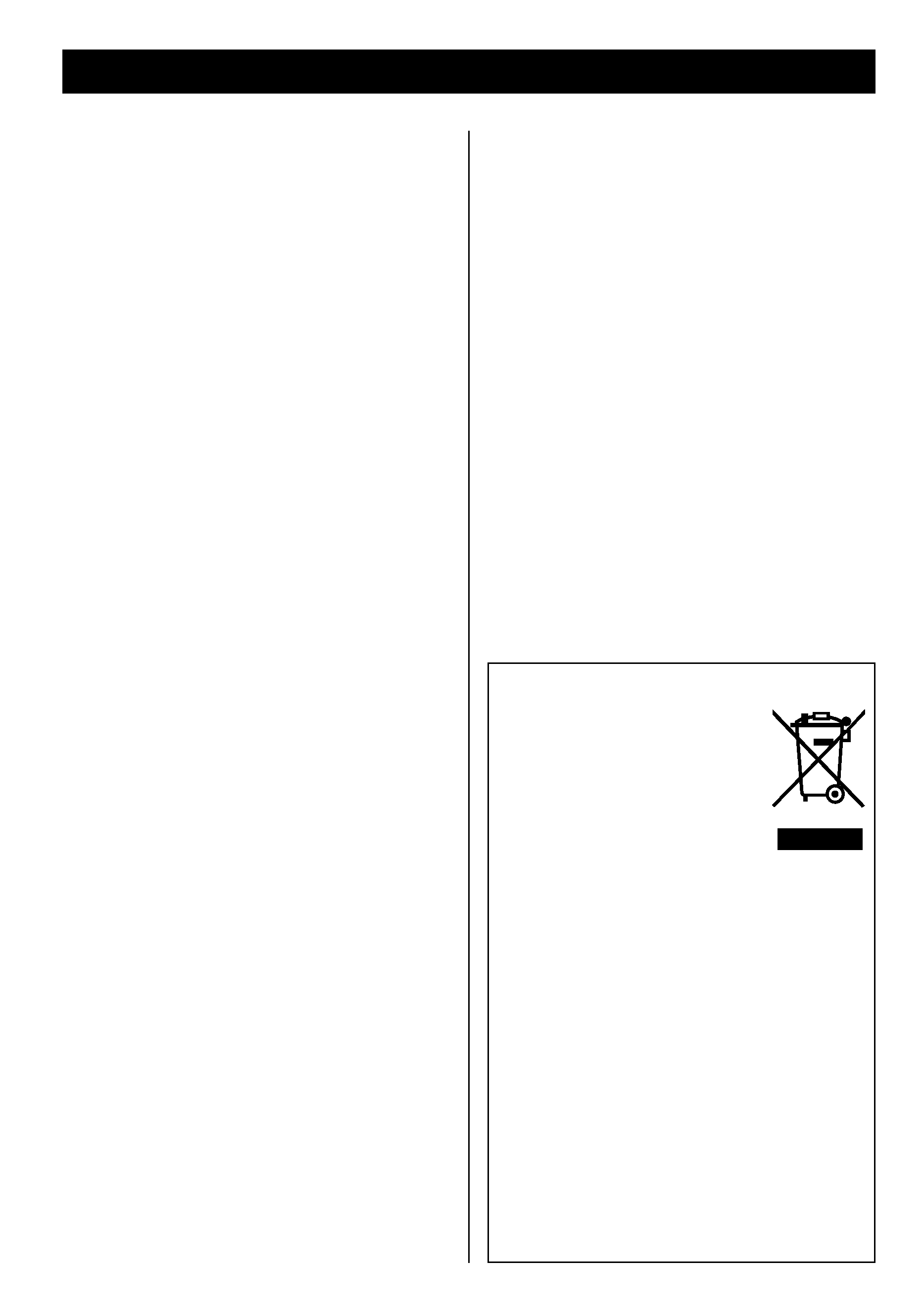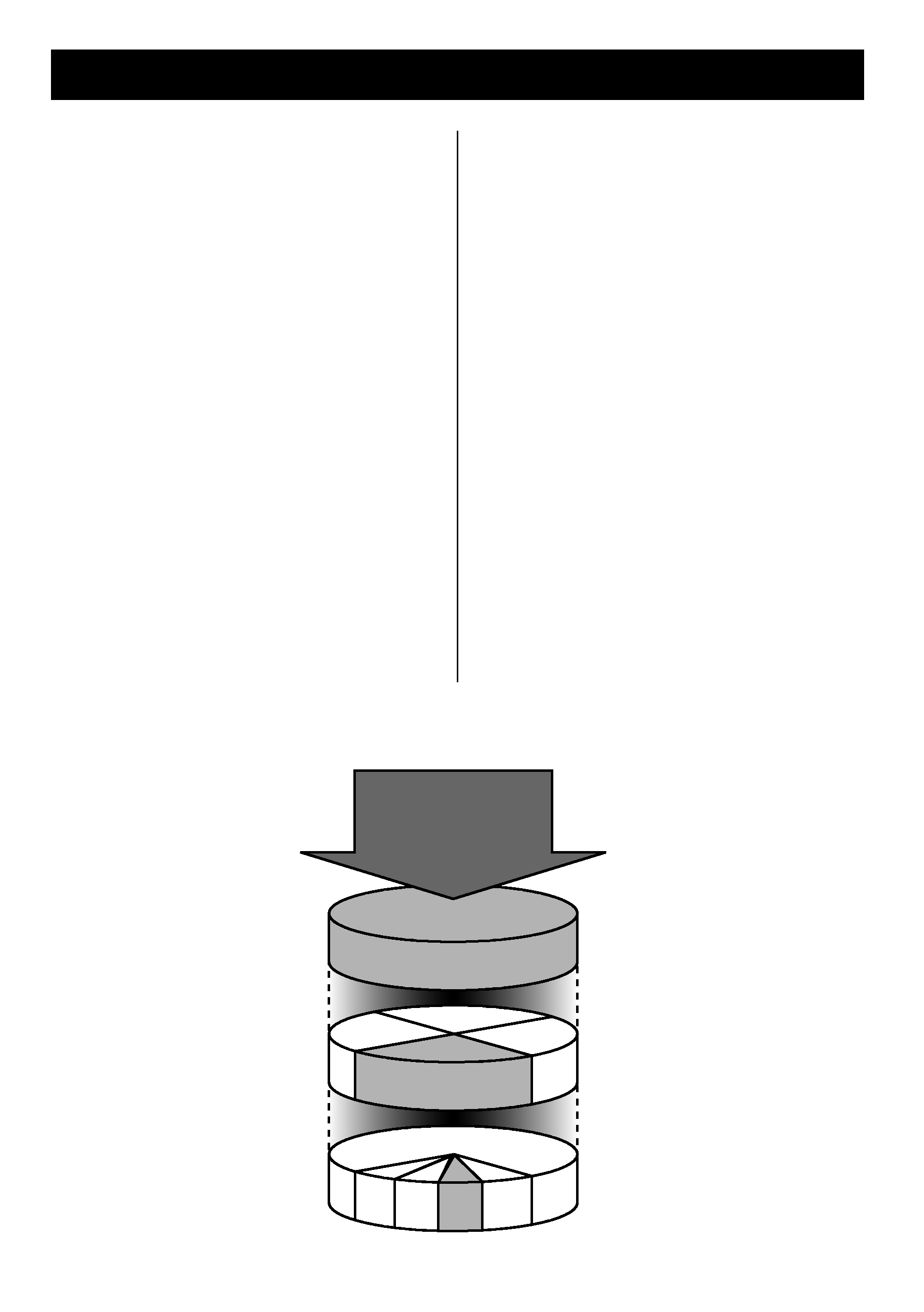
Z
9A10358400
DAB L-BAND/DAB BAND-#/FM Radio
OWNER'S MANUAL
R-3

2
Contents
Disposal of your old appliance
1. When this crossed-out
wheeled bin symbol is
attached to a product it
means the product is
covered by the European
Directive 2002/96/EC.
2. All electrical and electronic products
should be disposed of separately from
the municipal waste stream via
designated
collection
facilities
appointed by the government or the
local authorities.
3. The correct disposal of your old
appliance will help prevent potential
negative
consequences
for
the
environment and human health.
4. For more detailed information about
disposal of your old appliance, please
contact your city office, waste disposal
service or the shop where you
purchased the product.
Thank you for choosing TEAC. Read this
manual carefully to get the best
performance from this unit.
Before Using the Unit . . . . . . . . . . . . . . . . . 3
Rechargeable Batteries . . . . . . . . . . . . . . . . 4
About DAB . . . . . . . . . . . . . . . . . . . . . . . . . 5
Connections . . . . . . . . . . . . . . . . . . . . . . . . 6
Unit Functions. . . . . . . . . . . . . . . . . . . . . . . 8
Basic Operation. . . . . . . . . . . . . . . . . . . . . 10
System Resetting. . . . . . . . . . . . . . . . . . . . 11
Listening to DAB Radio
Auto Tunig . . . . . . . . . . . . . . . . . . . . . . 12
Manual Tuning . . . . . . . . . . . . . . . . . . . 14
Auto Select Function . . . . . . . . . . . . . . 15
Display Setting of the DAB . . . . . . . . . . . . 16
Listening to FM Radio
Auto Tuning . . . . . . . . . . . . . . . . . . . . . 18
Manual Tuning . . . . . . . . . . . . . . . . . . . 18
FM Mode . . . . . . . . . . . . . . . . . . . . . . . 19
Preset Stations . . . . . . . . . . . . . . . . . . . . . 19
Listening to External Source . . . . . . . . . . . 20
Sleep Timer . . . . . . . . . . . . . . . . . . . . . . . . 21
Timer . . . . . . . . . . . . . . . . . . . . . . . . . . . . 22
To turn the timer off. . . . . . . . . . . . . . . 24
To check the timer setting . . . . . . . . . . 24
Snooze Function . . . . . . . . . . . . . . . . . . 25
To stop the timer working . . . . . . . . . . 25
Troubleshooting . . . . . . . . . . . . . . . . . . . . 26
Specifications . . . . . . . . . . . . . . . . . . . . . . 27

3
Maintenance
If the surface of the unit gets dirty, wipe
with a soft cloth or use a diluted mild
liquid soap. Be sure to remove any excess
liquid completely. Do not use thinner,
benzine or alcohol as they may damage
the surface of the unit. Allow the surface
of the unit to dry completely before
using.
CAUTION
Ensure this product is not exposed to
dripping or splashing and that no object
filled with liquids, such as vases, is placed
on the product.
Do not install this equipment in a confined
space such as a book case or similar unit.
Allow adequate air circulation around this
product.
Before Using the Unit
<
As the unit may become warm during
operation, always leave sufficient space
around the unit for ventilation.
<
The voltage supplied to the unit should
match the voltage as printed on the rear
panel. If you are in any doubt regarding
this matter, consult an electrician.
<
Choose the installation location of your
unit carefully. Avoid placing it in direct
sunlight or close to a source of heat. Also
avoid locations subject to vibrations and
excessive dust, heat, cold or moisture.
<
Do not place the unit on an amplifier/
receiver.
<
Do not open the cabinet as this might
result in damage to the circuitry or
electrical shock. If a foreign object should
get into the unit, contact your dealer or
service company.
<
When removing the power plug from the
wall outlet, always pull directly on the
plug, never yank the cord.
<
Do not attempt to clean the unit with
chemical solvents as this might damage
the finish. Use a clean, dry cloth.
<
Keep this manual in a safe place for
future reference.

4
Rechargeable Batteries
The R-3 uses a Nickel-Metal-Hydride battery
pack stored in the battery compartment.
Leaving the AC adaptor connected to the R-
3 and plugged into an AC line, even when
not in use, ensures the batteries will be fully
charged when you need to use the R-3 on
battery power. The R-3 can be used for 3 to
3.5 hours after batteries are fully charged.
(When the volume is set to 20.)
<
When the batteries need to be recharged,
the STANDBY/ON indicator blinks at
regular intervals. The blinking interval will
grow faster as the batteries get closer to
discharge until the R-3 shuts off
automatically to protect the batteries.
<
When the R-3 is not being used but the
AC adaptor is plugged in, the batteries
will be completely charged within
approximately 3.5 hours from a full
discharge. During this period the
STANDBY/ON indicator will flash.
<
When the R-3 is ON and the AC adaptor
plugged in, the batteries will be
completely charged within approximately
24 hours.
<
It may take up to 4 charge and discharge
cycles before the batteries are operating
at full capacity when the R-3 is new or
left unused for several weeks.
It is suggested that the R-3 be plugged in
for about 12 hours before you use it for
the first time.
<
Once the R-3 has been fully charged
while it is STANDBY, do not unplug the
AC adaptor and then immediately plug it
again. This will restart the charging cycle
even though the batteries are fully
charged. Doing this repeatedly will
damage the batteries.
<
If the R-3 is not plugged in, the batteries
will slowly discharge as a safety measure.
Battery Replacement
When the batteries are exhausted, replace
the battery pack with a new one.
1. Remove the battery compartment cover.
2. Disconnect the battery pack connector,
and remove it.
3. Insert a new battery pack and attach its
connector.
4. Close the cover.
Caution:
<
Do not heat or disassemble rechargeable
batteries. Never dispose of old batteries
by throwing them in a fire

5
With this unit you can receive and listen to
Digital Audio Broadcast (DAB) programmes.
DAB uses digital, not analogue signals,
resulting in near CD-quality audio with
virtually interference-free reception. Along
with superior quality audio, DAB can also
deliver additional audio channels and text. In
the future, computer data and images are
also possible.
Digital radio is broadcast as groups of data
called Ensembles or Multiplexes. Each
Ensemble can contain a number of stations
(services) and each station contains a primary
service and can contain secondary services as
illustrated in the following diagram.
Each Ensemble is transmitted in a set
frequency range and received by this unit for
decoding. You can receive Ensembles
broadcast in the 174-240 MHz (Band III) or
1453-1490 MHz (L-band) frequency band
and store the services in each Ensemble for
you to access. The number of Ensembles you
receive depend on your location. Channels
used in the UK are in the range 10A to 12D,
and for international 5A to 13F. For L-band
the channels of LA to LW are available.
Ensembles and stations have labels (names)
that are used to identify them. Instead of
needing to know the particular frequency of
your favourite broadcast, you can simply
select the station name. Secondary services
and additional data such as text or Ensemble
information are also available.
DAB SIGNAL
ENSEMBLE
STATIONS
(PRIMARY
SERVICES)
SECONDARY
SERVICES
Parliament
BBC Radio 4
BBC
National
DAB
1
1
2
3+
1
2
3
4+
About DAB
